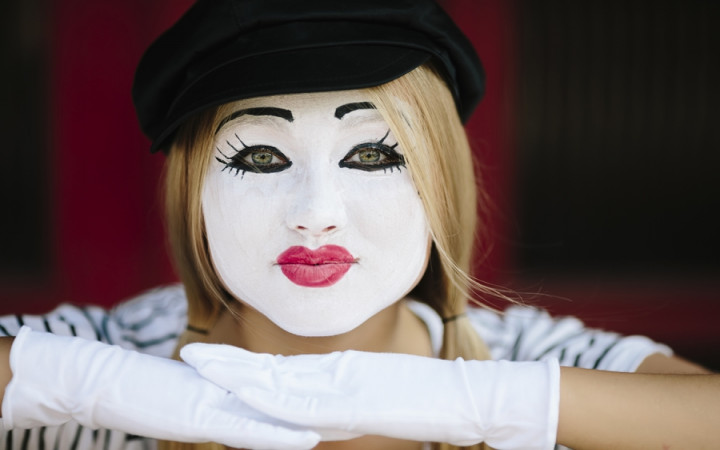Have you ever been wandering around the streets of a city and happened upon a street performer wearing interesting clothes, lots of white make-up, but not making a sound? If so, chances are you've met a mime!
Mime is a form of silent art that involves acting or communicating using only movements, gestures, and facial expressions. A person performing mime is also called a mime.
Non-verbal communication dates all the way back to the first human beings. Before there was spoken language, gestures and facial expressions were used to communicate. As spoken language developed, these gestures and facial expressions were retained as a form of simple entertainment.
Many people associate mime with French culture. However, mime is an ancient art that dates back to the early Greeks and Romans. It was in France, though, where mime flourished. It became so popular that mime schools were established throughout France, and a great tradition of French mimes soon followed.
Mime was brought to Paris in 1811 by Jean Gaspard Batiste Deburau, who was part of a touring acrobatic family. Deburau stayed in France and developed mime into the expressive modern version that still exists today. Deburau was famous for his foolish, naïve, lovesick character named Pierrot.
One of the most famous French mimes was Marcel Marceau. His character, Bip, wore a short coat and a top hat with a flower, Like Pierrot, Bip was mostly down on his luck. Marceau's work was also influenced by early silent film stars, such as Charlie Chaplin.
Modern mime can be divided into two main types: abstract and literal. Abstract mime usually does not feature a main character and has no plot. Instead, it focuses on provoking thought about a particular subject by expressing certain feelings or emotions.
Literal mime tells a story with a plot and characters. Often these stories are funny situations intended to elicit laughter from the audience. Some modern versions of mime also combine these two types into one interesting performance.
In 1952, Paul J. Curtis developed the art form now known as American mime. Different from its traditional, European counterpart, American mime combines acting, play-writing, and pantomime dancing. Modern mimes in America can often be seen blending many eclectic styles as they experiment and push the boundaries of the art form.




